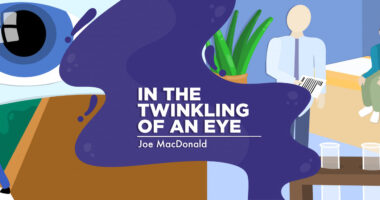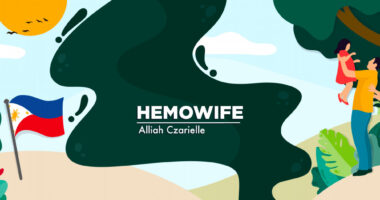My husband and I are redefining marriage in life with chronic illness
How our relationship breaks the mold of traditional gender roles

I recently came across a thought-provoking video featuring Betty Reid Soskin, a remarkable 102-year-old woman with a unique perspective on marriage. Throughout her long life, Soskin has embraced various roles, including daughter, wife, mother, casual songwriter, and, perhaps most notably, a ranger with the National Park Service until she retired at the age of 100.
In the video, she reflected on pivotal moments, such as the passing of her father and two husbands, which made her realize that she was no longer defined by a man. Soskin said that if she were to live her life again, she would choose not to marry.
The video prompted me to delve deep into my own journey with marriage as a modern, 30-year-old woman. Since my teenage years, I’ve strongly identified with feminism, challenging many conventional notions of womanhood and marriage. Here in the Philippines, where I live, traditional courtship, or “panliligaw,” often revolves around a man proving his worth to both the woman he’s interested in and her family, seeking their approval before marriage. However, I’ve always preferred a more casual and private approach to dating.
In many cases, I’ve been the one to initiate pursuit, often choosing partners who didn’t fit the mold of traditional masculinity. This was precisely the case when I met my husband, Jared.
Chronic illness redefined masculinity for my husband
Living with severe hemophilia B and epilepsy meant that he would never fit our society’s mold of a “traditional man.” Jared himself admits that he’s not a typical guy.
Here in the Philippines, most men play basketball; it’s an unspoken “social glue.” Jared doesn’t, because of the high risk of injury it poses. However, he does like being athletic and active on his own terms by lifting weights, swimming, and doing other safe sports.
Unlike many Filipino men, he doesn’t partake in long drinking sessions with his buddies. Because alcohol interacts with his seizure medications, he abstains. I enjoy having the occasional drink with my friends, however. On such occasions, he merely sits next to me and enjoys a glass of juice.
At home, Jared excels at domestic tasks such as cooking, organizing, cleaning, and child care — activities often associated with women. Yet he also enjoys tackling certain “masculine” chores, such as assembling furniture and performing simple home repairs. He avoids only tasks involving high-powered electric tools, as a sudden seizure could cause him to lose control and hurt himself. Whenever we hang up decorations or install appliances on our walls, I bravely wield the drill.
Teamwork in marriage
It’s quite a sight to behold: me, exerting all of my force against a power drill, while my husband, who’s twice my size, cheers me on. Once I finish, he steps in to handle the anchors and screws — a relatively minor task.
But it’s no big deal, because our marriage has always been about teamwork. We both contribute based on our strengths and capabilities at a given moment. We don’t assign tasks based on societal norms dictating what men or women “should” do. Instead, we simply ask each other, “What can you do right now?”
For me, marriage was about finding a best friend, a companion to navigate life’s challenges with. Jared became that person, providing steadfast support as I chased my dreams. During my early days of motherhood, when I struggled to breastfeed and my only respite was going back to work, Jared stepped in. He changed diapers and prepared bottles for our infant daughter. Whenever she woke up crying in the morning, and I was too tired to get up, he leaped out of bed and soothed her back to sleep.
Jared never demanded more. According to him, being a father stands out as one of his greatest accomplishments in life. Living with hemophilia may discourage some from pursuing a “normal” life. In our home, though, he has the freedom to live on his terms, and that alone exceeds his expectations.
My personal definition of a feminist marriage
I have never considered myself a “typical” woman. Since childhood, I’ve lived with a strong spirit of rebellion and a thirst for individuality. Tattoos, piercings, art, and writing became my forms of self-expression, challenging conventional notions of femininity. This often earned me the label of being difficult, yet Jared saw me for who I am. And he continues to see every part of me as I grow and change over the years.
As I reflect on Soskin’s words, I realize that my life isn’t defined by the presence or absence of a man. Rather, it’s enriched by a partner who shares my vision of equality. Jared’s willingness to challenge traditional masculinity norms, influenced by his experience with hemophilia, has led me to see marriage as a team effort and a vehicle for two people to grow and thrive in life.
Note: Hemophilia News Today is strictly a news and information website about the disease. It does not provide medical advice, diagnosis, or treatment. This content is not intended to be a substitute for professional medical advice, diagnosis, or treatment. Always seek the advice of your physician or another qualified health provider with any questions you may have regarding a medical condition. Never disregard professional medical advice or delay in seeking it because of something you have read on this website. The opinions expressed in this column are not those of Hemophilia News Today or its parent company, Bionews, and are intended to spark discussion about issues pertaining to hemophilia.







Leave a comment
Fill in the required fields to post. Your email address will not be published.